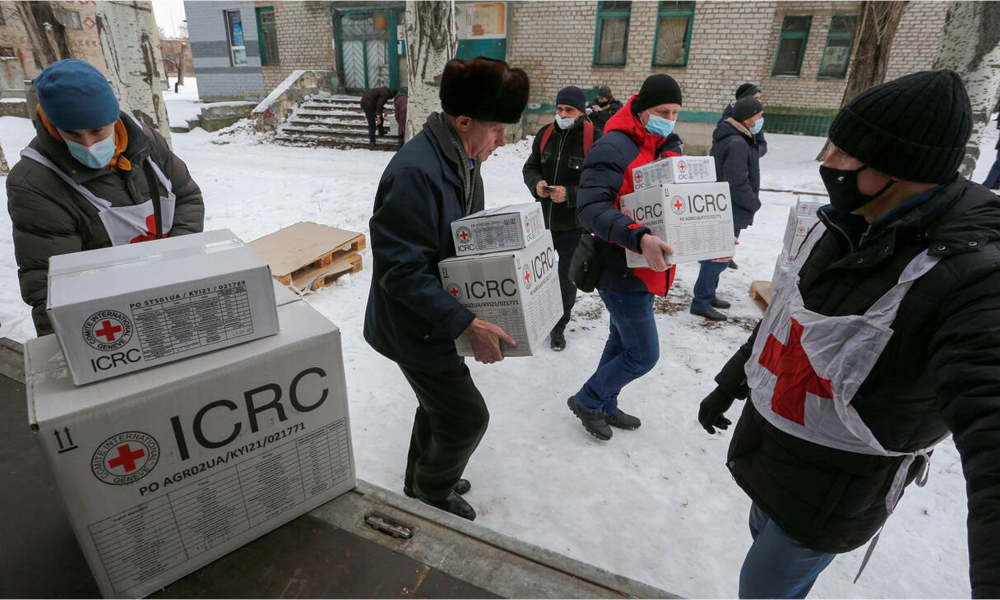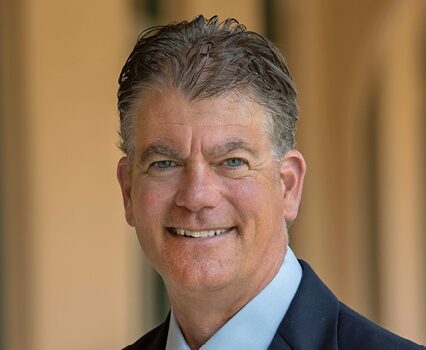Throughout the last few weeks, many professional advisors have reached out to us to discuss three common themes they’re hearing from clients:
- Disaster Giving: It’s very much on your clients’ minds, as it is on all of our minds. Thank you for asking about how San Diego Foundation (SDF) can help your clients navigate the balance between giving globally and giving locally.
- Qualified Charitable Distributions: We’ve seen an uptick in inquiries about the types of funds your clients can use to receive QCDs.
- Giving a Business to Charity: We are hearing from more and more of you that your business owner clients are interested in exploring ways to wrap charitable gifts into an eventual business exit or liquidity event.
Let’s examine each of these topics in further detail.
Disaster Giving: Perspectives for Your Clients
Both the recent one-year anniversary of the start of the Ukraine conflict and the earthquake that has devastated Turkey and Syria are causing more and more people to explore ways they can help. In an era of abundant giving methods and (sadly) potential fraud, SDF is a source of reliability and expediency to help your clients act on their charitable instincts.
Disaster giving frequently takes the form of a wide-ranging response, given that disasters can occur suddenly or over time, domestically and internationally. The damage can be heart-wrenching, such as loss of life and property destruction, or health-related, like the pandemic that swept the globe. The urge to help is often immediate.
There are many viable options for your clients to activate their generosity toward relief efforts, but there are also caveats. While global disaster giving is important, it is also important for clients to stay tuned to the most critical needs right here in San Diego. Although these critical needs do not always take the form of a time-bound disaster, the impact of ongoing crises such as low access to health care and poverty can be quite damaging over the long term.
What is Disaster Giving?
Although challenging to pinpoint holistically, what’s typically referred to as “disaster giving” is perhaps best thought of as a subset of what has been a robust philanthropic climate in recent years.
In 2021, Americans’ charitable giving reported by Giving USA was up 4% over 2020 to nearly $485 billion. Certainly the strong percentage increases in the categories of Human Service, Public-Society Benefit (up 23%, the second-highest percentage gain) and Health all likely involved COVID-related concerns and sentiments.
An emerging area of challenge may be annual giving to international affairs, which declined approximately 5% from 2019 to 2021, finishing at $27.4 billion. Of course, these figures could change for 2022 when accounting for aid to Ukraine (and in future reports, to Turkey and Syria).
As context, through February 2023, U.S. government aid to Ukraine has exceeded $75 billion, including 40% for humanitarian and financial purposes and the remainder for the military. Philanthropy also contributed to humanitarian needs; the 10 largest private donations, led by Microsoft, totaled more than $1.2 billion.
How SDF Can Help
SDF can help your clients fulfill their giving instincts by acting as a secure, knowledgeable and trustworthy facilitator. Our team personally knows–and regularly vets–hundreds of charities every year, and we can help you and your clients navigate the options for both local and international giving.
Frequently, a donor-advised fund at SDF will be a suitable giving vehicle for your clients. Our team can help connect your clients to the causes they care about by identifying the most effective organizations addressing the critical needs both locally and globally in your clients’ areas of interest. Working with SDF also helps your clients secure robust tax planning benefits that can be missed when a client gives to charity on impulse.
Often, our team will update our Emerging, Important Needs web page as local, national and international crises occur and provide a list of vetted organizations and funds that are leading relief efforts.
Finally, SDF can help your clients steer clear of scams perpetrated via familiar-looking but sham websites and QR codes, both of which proliferate during highly emotional or threatening times surrounding a disaster. While your clients may be tempted to make a gift online or by phone out of compassion in response to a verbal solicitation or a news story, remind them that SDF has much to offer—safely, securely and advantageously—when it’s time to make impactful humanitarian gifts both here and abroad.
QCDs, Designated Funds and Field-of-Interest Funds
Most attorneys, accountants and financial advisors are well-aware of donor-advised funds (DAFs) and the reasons behind their popularity. Especially when a DAF is established at SDF, this vehicle is an excellent way for your clients to organize their charitable giving and get even more connected to the causes they care about.
Enter the QCD
Your clients can give nearly any type of asset to a DAF at SDF. A notable exception, though, is the Qualified Charitable Distribution (QCD). A QCD allows a taxpayer 70 ½ or older to make a direct transfer of up to $100,000 annually from an IRA to a qualifying charity. A DAF is not considered to be a qualifying charity.
Although donor-advised funds cannot accept QCDs, SDF offers other types of funds that can accept QCDs.
For example, designated funds and field-of-interest funds are ideal recipients of QCD transfers. These fund types are often overlooked, despite the high value they can deliver to your client and to the community.
What is a Field-of-Interest Fund?
The Council on Foundations defines a “field of interest fund” as “A fund held by a community foundation that is used for a specific charitable purpose such as education or health research.”
Perhaps your client is passionate about rare-disease solutions, feeding the food insecure or preserving works of art, for example. Your client selects the name of the fund (family, cause-related or even nondescript) and then, our knowledgeable team distributes grants from the field-of-interest fund in a way that is aligned with your client’s values and charitable wishes outlined in the fund agreement.
What is a Designated Fund?
Designated funds are defined as, “A type of restricted fund in which the fund beneficiaries are specified by the grantors.”
These are a good choice for a client who knows they want to support a particular charity or charities for multiple years. The client names the fund and fulfills the distributions. Made over time, these funds can help the charity’s or charities’ cash flow planning. Distributions are aligned with your client’s wishes set forth in the original fund document.
QCD Reminders
For the client aged 70 ½ through 72, a QCD removes funds from an IRA before the client reaches the age-73 threshold for Required Minimum Distributions (RMDs).
This can lessen the eventual income tax hit that accompanies RMDs. And for RMD-applicable clients, the QCD counts toward their RMD. In both cases, the QCD transfers do not fall into the client’s taxable income.
QCDs are even more popular now that the $100,000 cap will be indexed for inflation under the new laws. Also, under the new laws, a one-time, $50,000 distribution to a charitable remainder trust or charitable gift annuity is now permitted.
Giving a Business to Charity
Amid recent market volatility and tenacious concerns about inflation and interest rates, high-profile giving by donors associated with well-known businesses has maintained its place in the limelight.
Recent examples abound, including last year’s gift of Patagonia by founder Yvon Chouinard; the well-reported generosity of philanthropists Melinda French Gates and MacKenzie Scott; and the portion of the proceeds, potentially worth $5 billion, from the eventual sale of Subway restaurants that are set to flow to a charitable foundation.
As an advisor to business owners, you can help your clients leverage potential future liquidity events to support the community causes they care most about.
Advance planning is critical. At SDF, we’re happy to help as early as possible in your discussions with a client about giving part (or all) of a closely-held business to charitable causes. These transactions carry with them layers of complexity, largely around the timing of the charitable gifts in relation to the sale transaction. The best outcomes are achieved through a thoughtful, multi-step process.
Many successful closely-held exit transactions occur only after several years of planning — and most of that planning occurs well before potential buyers are even engaged. This planning period is an important time for your client to consider giving ownership shares of the company to a DAF, especially knowing that under certain circumstances, the proceeds of the shares held by the DAF will be immune from capital gains taxes if the business eventually does sell, leaving more money to support the client’s favorite causes.
You might even consider encouraging your client to give shares to a DAF not all at once, but in increments over time during the business exit planning period (before a buyer is identified). This can help avoid the appearance that the gift is merely a function of the business sale and as such intended to be a tax dodge. If the IRS determines that the stock gifts to charity and the sale of the company are really one and the same event – a “step transaction” – the tax benefits of the charitable deduction could be disallowed.
Another essential part of the process is to secure a proper valuation of the stock by an independent and qualified appraiser for charitable deduction purposes when the ownership is gifted to the DAF.
Please reach out to our team to discuss how we can help your business owner clients who intend to maximize their future ability to support the charities they love.
Learn More
For nearly 50 years, we have partnered with a large network of wealth advisors, estate planning attorneys, tax planners and other advisors to help high-net-worth clients and families achieve financial planning objectives and charitable giving goals, while maximizing tax deductions.
If you’re interested in learning how we can help meet your clients’ financial planning and charitable giving goals in 2023, contact me at (858) 245-1508 or jrogers@sdfoundation.org.






